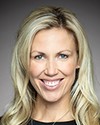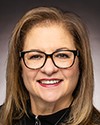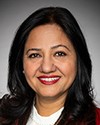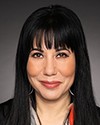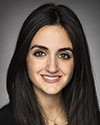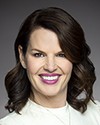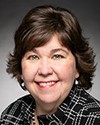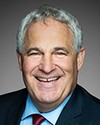I call the meeting to order. Welcome to meeting 115 of the House of Commons Standing Committee on the Status of Women.
Before we begin, I ask all members and all in-person participants to consult the cards on the table for guidelines on how to prevent audio feedback incidents.
Please take note of the following preventative measures in place to protect the health and safety of all participants, including the interpreters. Please use only the approved, black earpieces. The former grey earpieces must no longer be used. We need to be mindful to keep the earpieces away from the microphones at all times. When you're not using your earpiece, please face it down on the sticker placed on the table for this purpose. We thank you in advance for your co-operation on this.
To all members, please wait until I recognize you by name prior to speaking. For members in the room, please raise your hand if you wish to speak. For members on Zoom, please use the “raise hand” function. The clerk and I will be managing the speaking time, and I remind you that all comments need to be addressed through the chair.
For the benefit of the witnesses, before speaking, please wait until I recognize you by name. For those participating by video conference, click on the microphone icon to activate your mic and please mute yourself when you are not speaking. For those of you in the room, your mic will be controlled by the proceedings and verifications officer. You may speak in the official language of your choice. Interpretation services are available. You have the choice of floor, English or French for your earpiece. If the interpretation is lost, please inform me right away.
We have a number of wonderful witnesses present and online, and because of the volume of witnesses I am going to be relatively precise on time, just to respect everybody's time here today. Pursuant to Standing Order 108(2) and the motion adopted by the committee on Tuesday, June 4, 2023, the committee will commence its study in response to the call for public comment on the breast cancer draft recommendations from the Canadian Task Force on Preventive Health Care.
Today's meeting will take place in the form of a two-hour panel with our witnesses so that we can maximize the time on this very important topic.
I now welcome and introduce our witnesses. As individuals, we have Shira Farber, by video conference; Dr. Ify McKerlie; Dr. Jean Seely, professor of radiology, University of Ottawa, by video conference; and Dr. Moira Rushton, medical oncologist. From the Canadian Cancer Society, we have Helena Sonea, director of advocacy; David Raynaud, senior manager, by video conference; and Ciana Van Dusen, advocacy manager, prevention and early detection. We also have, from CancerCare Manitoba, Dr. Pamela Hebbard, head, surgical oncology, joining us by video conference; and Dr. Donna Turner, chief, population oncology, joining us by video conference as well. Lastly, from the Coalition for Responsible Healthcare Guidelines, we have Dr. Shiela Appavoo, chair.
If you're appearing as an individual, you have five minutes for an opening statement. If you are appearing on behalf of an organization, you have five minutes shared with your colleagues.
At this point, I give the floor to Ms. Farber to start. You have the floor for five minutes.

